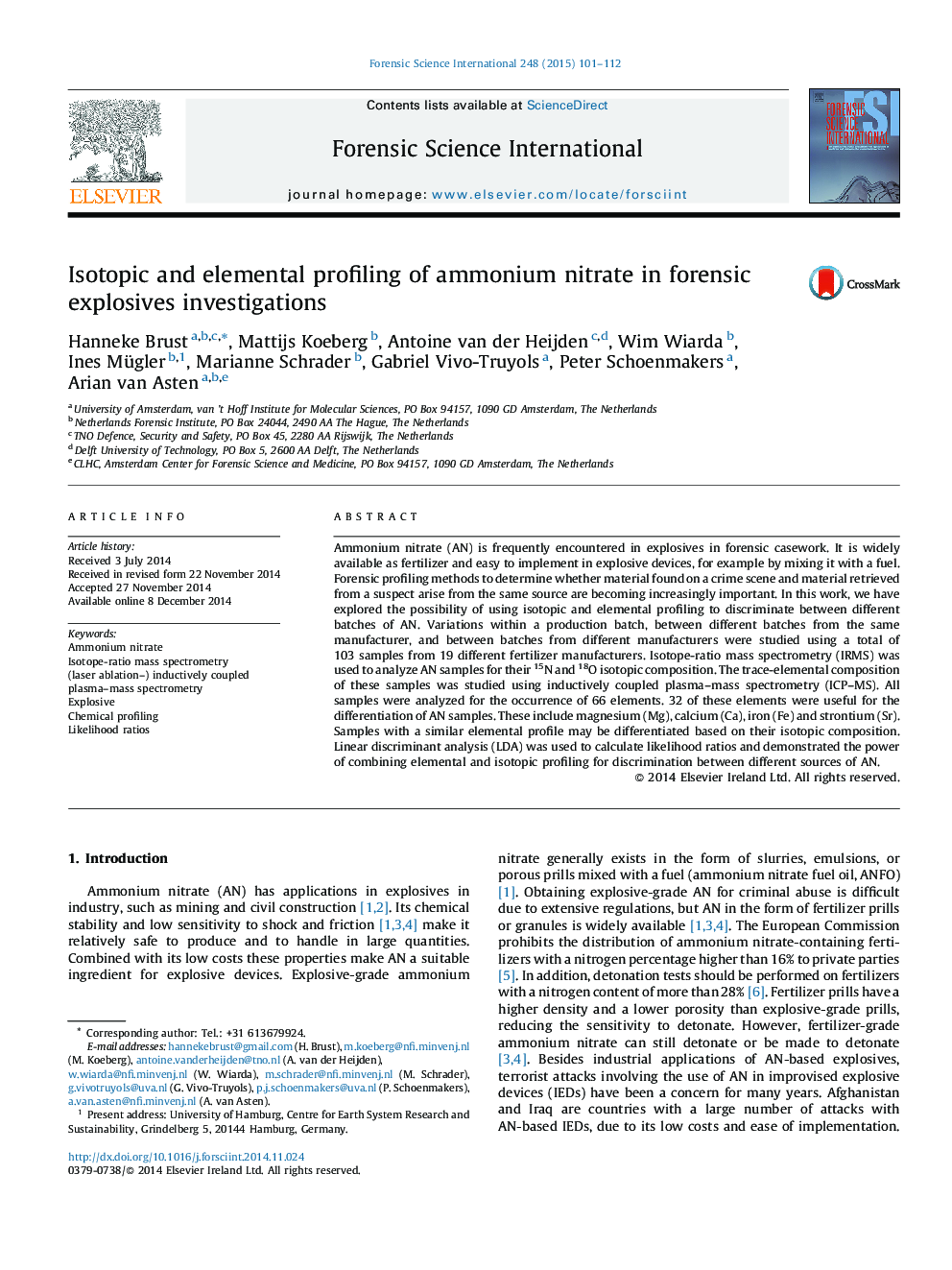| کد مقاله | کد نشریه | سال انتشار | مقاله انگلیسی | نسخه تمام متن |
|---|---|---|---|---|
| 95509 | 160433 | 2015 | 12 صفحه PDF | دانلود رایگان |
• Use of ICP–MS and IRMS for chemical profiling of ammonium nitrate.
• Possible to discriminate between ammonium nitrate from different sources.
• High discrimination power for combined elemental and isotope profiles.
• Likelihood ratios were calculated using linear discriminant analysis.
Ammonium nitrate (AN) is frequently encountered in explosives in forensic casework. It is widely available as fertilizer and easy to implement in explosive devices, for example by mixing it with a fuel. Forensic profiling methods to determine whether material found on a crime scene and material retrieved from a suspect arise from the same source are becoming increasingly important. In this work, we have explored the possibility of using isotopic and elemental profiling to discriminate between different batches of AN. Variations within a production batch, between different batches from the same manufacturer, and between batches from different manufacturers were studied using a total of 103 samples from 19 different fertilizer manufacturers. Isotope-ratio mass spectrometry (IRMS) was used to analyze AN samples for their 15N and 18O isotopic composition. The trace-elemental composition of these samples was studied using inductively coupled plasma–mass spectrometry (ICP–MS). All samples were analyzed for the occurrence of 66 elements. 32 of these elements were useful for the differentiation of AN samples. These include magnesium (Mg), calcium (Ca), iron (Fe) and strontium (Sr). Samples with a similar elemental profile may be differentiated based on their isotopic composition. Linear discriminant analysis (LDA) was used to calculate likelihood ratios and demonstrated the power of combining elemental and isotopic profiling for discrimination between different sources of AN.
Journal: Forensic Science International - Volume 248, March 2015, Pages 101–112
